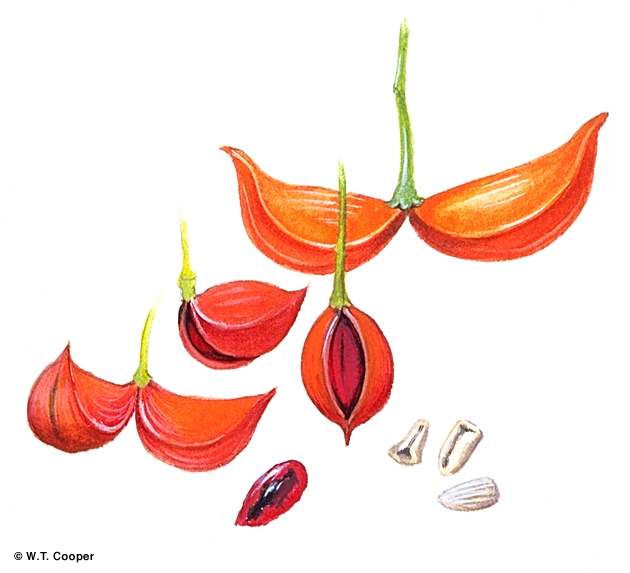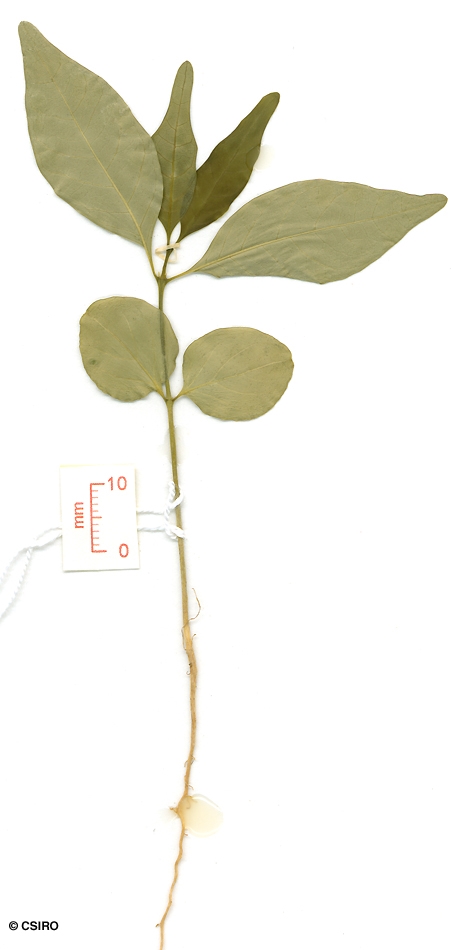Australian Tropical Rainforest Plants - Online edition
Tabernaemontana pandacaqui Lam.





Lamarck, J.B.A.P.Monnet de (1792) Tableau Enc. 2 : 299. Type: Near Manila, Luzon, Philippines, Sonnerat s. n.; holo: P-LA; iso: P.
Windmill Bush; Banana Bush
Usually flowers and fruits as a shrub 1-2 m tall.
Twigs and petioles produce a milky exudate. Stipules small and inconspicuous, wedged between the petiole and the twig. Both the upper and lower surfaces of the leaf blades usually glabrous. Leaf blades about 4-11 x 1.5-4.5 cm, petioles about 0.5-1.5 cm long. Lateral veins about 6-12 on each side of the midrib, curving but not forming loops inside the blade margin. Twig lenticels usually numerous and obvious, light brown and +/- circular.
Pedicels about 6-10 mm long. Pedicel and flower parts produce a milky exudate when cut. Calyx lobes glabrous, about 1.5-3.2 mm long with 3-4 small glands on the inner surface near the base. Corolla tube about 9-17 mm long, lobes about 5-15 mm long with flounced margins. Pollen white. Stamens attached above the middle of the corolla tube. Styles fused just below the hairy stigma which is retuse at the apex. Stigma papillose.
Fruits produce a milky exudate when cut or damaged. Fruiting carpels about 20-38 x 15 mm, usually paired, +/- boat-shaped and attached by their sterns opening upwards. Seeds about 4-6 x 3 mm. Aril pink to crimson. Testa marked by longitudinal grooves or furrows which intrude into the endosperm on one side of the seed. Embryo about 2.5-3 mm long. Cotyledons much wider than the radicle. Radicle twice as long as the cotyledons.
Cotyledons ovate, orbicular to elliptic, about 11-21 x 10-18 mm, apex acute or obtuse, base cuneate. First pair of leaves ovate, about 4 x 1.5 cm, glabrous, margins smooth. At the tenth leaf stage: seedlings glabrous, leaves elliptic, apex acuminate, base attenuate, stipules (about 1.5-2.5 mm long) in the leaf axils wedged between the petiole and the stem. All seedling parts produce a milky exudate. Stem lenticels pale. Seed germination time 113 to 327 days.
Occurs in CYP, NEQ, CEQ and southwards to north-eastern New South Wales. Altitudinal range from near sea level to about 800 m. Grows as an understory plant in well developed rain forest, monsoon forest and beach forest. Also occurs in Asia, Malesia and the Pacific islands.
This species has horticultural potential as it produces large numbers of showy white flowers and rather colourful fruits.





